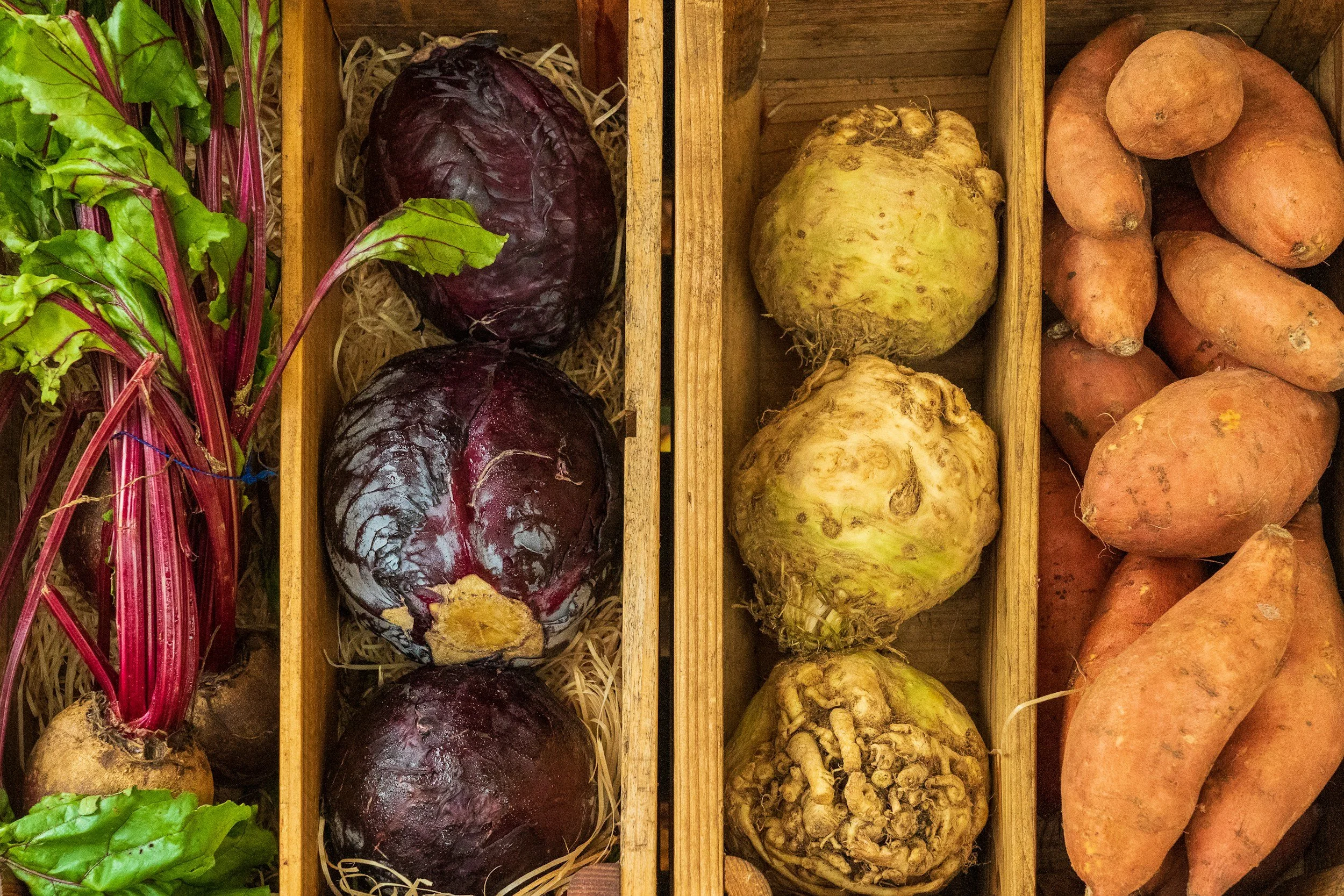Burdock
By Anna Fernandez
The life force in a biannual or perennial plant is evident in the greenness of its leaves and the vibrancy of its flower. As it begins to die back in the fall, that life force is not lost; it is transferred into the root, which embraces it and keeps it safe until the next growing season.
Thinking of it this way, when using roots as medicines, one can see why the best time to harvest such a treasure is in the late fall or early spring — when the life force is still strongest in the root.
Winter is an important time to take certain root medicines because of the nature of our winter lifestyles; eating heavier foods and spending less time outdoors results in less digestive vitality and lack of activity, which can make us vulnerable to illness. Certain roots can be taken daily over time to restore and tone the organs and systems, bringing about overall health and well-being and potentially preventing imbalance and disease. Herbs taken in this way are called tonics. Other roots are taken for a short duration in response to acute symptoms.
Many local Michigan plants have roots that are considered tonics. Some are abundant, well known, and considered to be like a food. Others are more medicinal and often harder to find. Southeast Michigan boasts an array of both.
Dandelion root is an easy-to-find tonic herb known for its nutritive value. It is gentle yet effective for improving liver, gallbladder, and overall digestive function, and it may also help normalize blood sugar levels. This underutilized plant may play a key role in preventative medicine.
Burdock root is rich in minerals and can be eaten in stir-fries and is great in soups. Burdock is used as a tonic to support the liver and aid in digestion. It helps to restore normal function by improving metabolism and aiding in the elimination of waste products. This root also stimulates circulation in the skin and is frequently used for skin conditions, especially ones of the dry and scaly variety that often present during the winter months.
The root of the Astragalus plant is used as an immune tonic to strengthen the overall immune system, build resistance, and prevent common infections. Mild in flavor, it is a great addition to hearty winter soups.
Adaptogens are a group of herbs considered to be the ultimate tonics. Many of the most highly revered adaptogens are roots. These herbs increase overall health and vitality by modulating the body’s response to stressors via the endocrine system, which in turn boosts immune and nervous system function. Some adaptogen roots include Ginseng, Ashwagandha, Eleuthero, and Licorice.
Echinacea root, although not considered a tonic, is widely used as an immune boosting herb taken over a short duration in frequent doses at the first sign of a sniffle. It boosts white blood cell count and encourages the body to do the housecleaning necessary to stay healthy.
These roots can be harvested and made into winter medicines, including teas, tinctures syrups, capsules, and so on. Alternatively, you can find them in many forms at your local herbalist or health food store.
These roots are a small representation of herbs available for maintaining wellness. It makes sense that the deep, earthy energy of roots would play a role in helping us stay healthy in the long, dark, and cold winter months.
Anna Fernandez is an herbalist and the owner of Mother Bloom Botanicals. She’s also a midwife with New Moon Midwifery. She lives outside of Chelsea on a small farm with her husband and two children. She can be contacted at anna.motherbloom@gmail.com.
Related Content:










































































































































































































Are you looking for a unique, useful, and beautiful herb for your garden? Let me introduce you to Marshmallow, a hardy perennial whose every part has a use. It can grow quite tall, up to four feet, with soft fuzzy leaves and light purple flowers. This plant has many cousins in the mallow family which are planted as ornamentals. Marshmallow (Althaea officinalis) is the medicinal species that we will explore today.